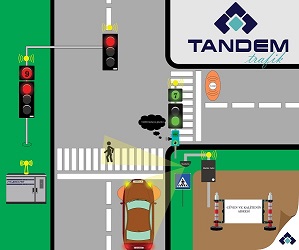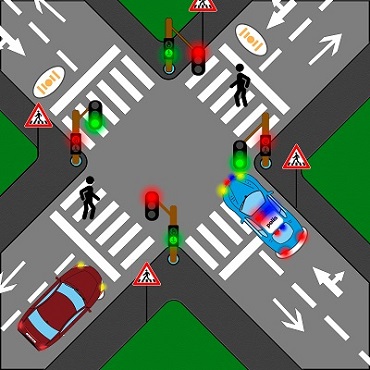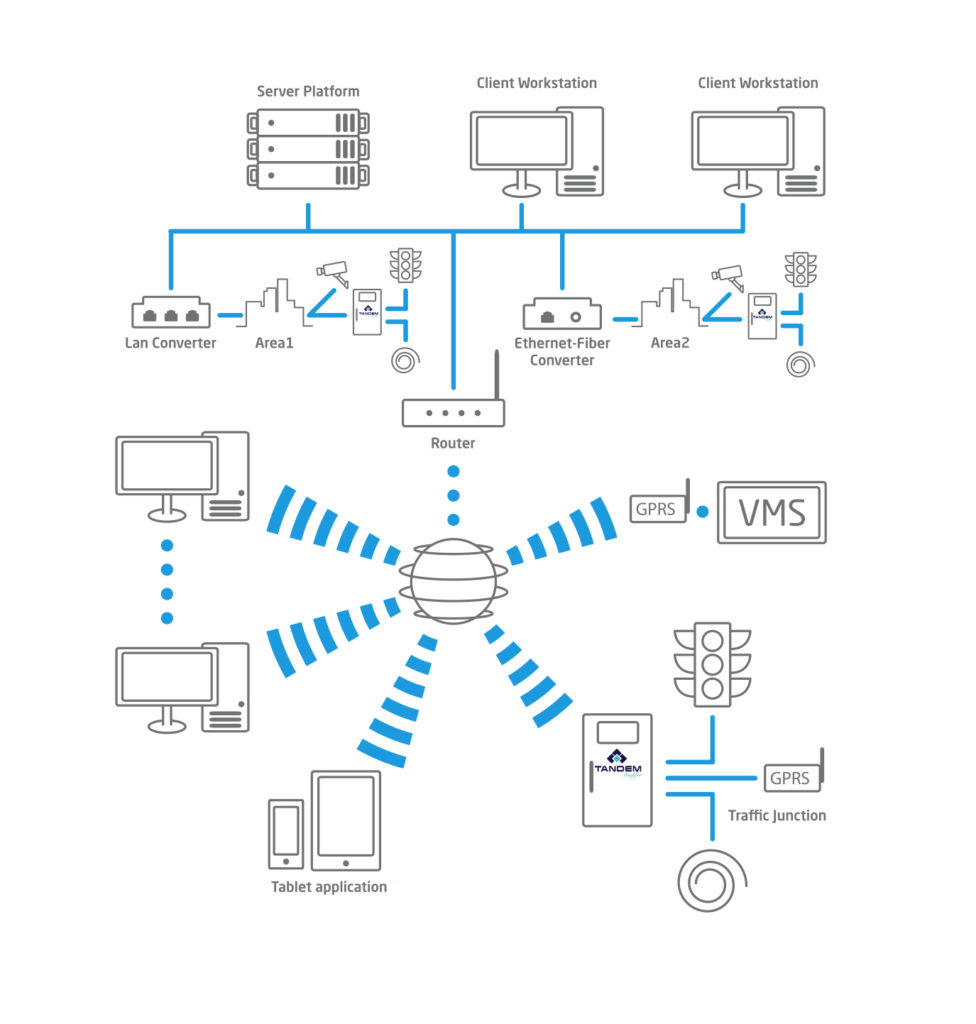Intelligent Traffic Systems
Today, it has become very difficult to plan and manage urban and intercity traffic due to reasons such as urban population growth, industrialization, rapidly increasing number of vehicles and the spread of land transportation.
As Tandem Traffic, we serve with our Intelligent Traffic Systems Applications.
- Stimulating Signaling Control System
Demand (traffic) stimulation signaling systems are needed for fixed time programs, in which the direction and density of traffic differ, or to use the arteries more efficiently. These can be collected in four main titles as adaptive, semi-excited, fully excited and pedestrian excited. When it comes to the logic of the work, it is a semi-excited type in pedestrian stimulation signaling.


- Semi Stimulation Signaling System;
In semi-excitation signaling systems, some of the junction branches are secondary roads with very few vehicle outputs that are usually connected to the main road.
For example, a village, factory or quarry etc. The points where the roads coming from the ground meet the artery. The aim of this system is to prevent traffic accumulation, inefficiency and fuel consumption, which is formed by stopping the main road by spending time on secondary roads even though there is no vehicle in the cycle during the day. In this way, loop detector etc. on secondary roads. By placing the sensors, it is ensured that the traffic on both sides is safely provided by giving green time to the main roads and by giving green to the vehicle in the secondary direction when the sensors occur. If desired, the program can be programmed in an extension structure according to the continuity of the demand in the secondary green time. In such junctions, there is a spare fixed program against any sensor failure and if the fault is detected, the signaling automatically switches to the fixed time program.
- Fully Excited Signaling System;
The first thing to note in this claim is that the intensity of the arms at the signalized junction is variable.
Otherwise, the system will not be more efficient than the fixed-time program and will not go beyond counting requests.
If the above mentioned variable density condition is met, loop sensors, accessible pedestrian buttons, etc. for all arms and pedestrians in this type of signaling. Sensors are added and the right of passage and times are given according to the demand. In this case, minimum and maximum values are entered into the greens, the reason for this is that the phase where the density is low, when the demand is received, the demand is met and immediately turns to the other branches. Thus, since the arm, which has no demand, has never lost time, and the road with little demand has been closed after enough time, optimum efficiency is obtained by giving the green time to the arms with high density. In addition, when there is no pedestrian demand, the traffic flow for the pedestrians is not interrupted. In such junctions, a spare fixed program is found against any sensor failure and if the fault is detected, signaling automatically switches to the fixed time program.
- Adaptive Signaling System;
In addition to the fully excited signaling system, this system, which enables the intersections on the existing transportation network to communicate with each other and uses traffic data from various sensors with its more advanced algorithm, optimizes traffic management and reduces the intensity at the intersections, thus saving time and fuel. For example; Adaptive signaling system, which transmits the information of how many vehicles in a dense artery or intersection continue in the artery and how many deviate to secondary roads, allows the relevant intersections to take precautions immediately before vehicles arrive and improves red-green times and reduces vehicle density.


